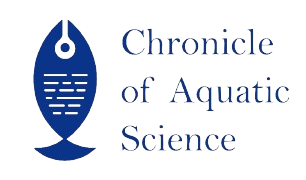| File | Action |
|---|---|
| CoAS_V1IS5_01 | Download |
- 919088951040 call us
- chronicleofaquaticscience@gmail.com Mail us
CoAS_V1IS5_01
Review Article
Encapsulation Unveiled: Exploring Techniques and Applications
Aimen Firdous*
Abstract
Encapsulation, the process of enclosing one substance within another, has garnered significant attention and importance in food processing industries. Encapsulation is a transformative process with profound implications in the realm of food processing. Encapsulation has redefined the preservation, enhancement of flavors and controlled release of sensitive and valuable components within food products. This technology has emerged as an anchor in maintaining the overall quality of food items, preventing oxidation and stability of omega-3 fatty acids, extending shelf life and precisely delivering flavors and nutrients to the consumer. By shielding sensitive elements like vitamins, minerals, flavors and bioactive compounds from external threats such as heat, moisture, oxygen and light, encapsulation ensures that these ingredients retain their efficacy and quality and also preserves their nutritional and sensory attributes. Furthermore, encapsulation enables the controlled and targeted release of these ingredients enhancing not only the taste and texture of products but also their nutritional benefits. The applications of encapsulation are myriad, ranging from fortifying foods with essential nutrients to concealing undesirable flavors, enhancing product stability and providing new frontiers in product development.
Keywords
Controlled release, Nutrient protection, Flavor enhancement, Sensitive ingredients, and nutrients delivery
References
Anal, A.K. and Singh, H. (2007) RecentAdvances in Microencapsulation ofProbiotics for Industrial Applicationsand Targeted Delivery. Trends inFood Science & Technology, 18,240-251.
Bustos, R., Romo, L., Yanez, K., Diaz, G.and Romo, C. (2003) OxidativeStability of Carotenoid Pigments andPolyunsaturated Fatty Acids inMicroparticulate Diets ContainingKrill Oil for Nutrition of Marine FishLarvae. Journal of Food Engineering,56, 289-293.
Connick, J. and William, J. (1983)Controlled Release of BioactiveMaterials Using Alginate Gel Beads.US Patents No. 4401456.
De Vos, P., Faas, M.M., Spasojevic, M. andSikkema, J. (2010). Encapsulationfor Preservation of Functionality andTargeted Delivery of Bioactive FoodComponents. International DairyJournal, 20, 292-302.
Desai, K.G.H. and Park, H.J. (2005). RecentDevelopments in Microencapsulationof Food Ingredients. DryingTechnology, 23, 1361-1394.
Dubey, A., Hsia, R., Saranteas, K., Brone, D., Misra, T. and Muzzio, F.J. (2011) Effect of Speed, Loading and Spray Pattern on Coating Variability in a Pan Coater. Chemical Engineering Science, 66, 5107-5115.
Dziezak, J.D. (1998). Microencapsulation and Encapsulated Food Ingredients. Food Technology, 42, 136-151.
Dziubla, T.D., Shuvaev, V.V., Hong, N., Hawkins, B.J., Madesh, M., Takano, H. and Muzykantov, V.R. (2008). Endothelial Targeting of Semi- Permeable Polymer Nanocarriers for Enzyme Therapies. Biomaterials, 29, 215-227.
Eratte, D., Dowling, K., Barrow, C.J. and Adhikari, B. (2018). Recent Advances in the Microencapsulation of Omega-3 Oil and Probiotic Bacteria through Complex Coacervation: A Review. Trends in Food Science & Technology, 71, 121-131.
F. Gibbs, Selim Kermasha, Inteaz Alli, Catherine N. Mulligan, B. (1999). Encapsulation in the food industry: a review. International journal of food sciences and nutrition, 50(3), 213- 224.
Fathi, M., Mozafari, M.R. and Mohebbi, M. (2012) Nanoencapsulation of Food Ingredients Using Lipid Based Delivery Systems. Trends in Food Science & Technology, 23, 13-27.
Favaro-Trindade, C.S., Okuro, P.K. and Matos, J.F.E. (2015) Encapsulation via Spray Chilling/Cooling/Congealing. In: Mishra, M., Ed., Handbook of Encapsulation and Controlled Release, CRC Press, Boca Raton, 71- 88.
Gascon, A.D., Zuritz, C.A., Bustamante, J.A., Borbon, L.D. and Oberti, G. (2001) A Study of Different Formulations of Wall Support Systems for Microencapsulation of Antioxidant Essential Oils. ISHS Acta Horticulturae, 503, 53-58.
Gharsallaoui A, Roudaut G, Chambin O, Voilley A, Saurel R (2007) Applications of spray-dryingin microencapsulation of food ingredients: an overview. Food Res Intern 40:1107–1121
- Published online
- 30th October, 2023
How to Cite the Article
Firdous, A. 2023. Encapsulation Unveiled: Exploring Techniques and Applications. Chronicle of Aquatic Science 1(5): 1-17.
Copyright
This is an open-access article distributed under the terms of the Creative Commons Attribution License (CC BY). The use, distribution or reproduction in other forums is permitted, provided the original author(s) and the copyright owner(s) are credited and that the original publication in this journal is cited, in accordance with accepted academic practice. No use, distribution or reproduction is permitted which does not comply with these terms.

CoAS_V1IS5_01


